
Rediscovering Japan

Rediscovering Japan
Travel (Ibaraki Prefecture (Ooarai/Mito/Kasama))

by tomizuta
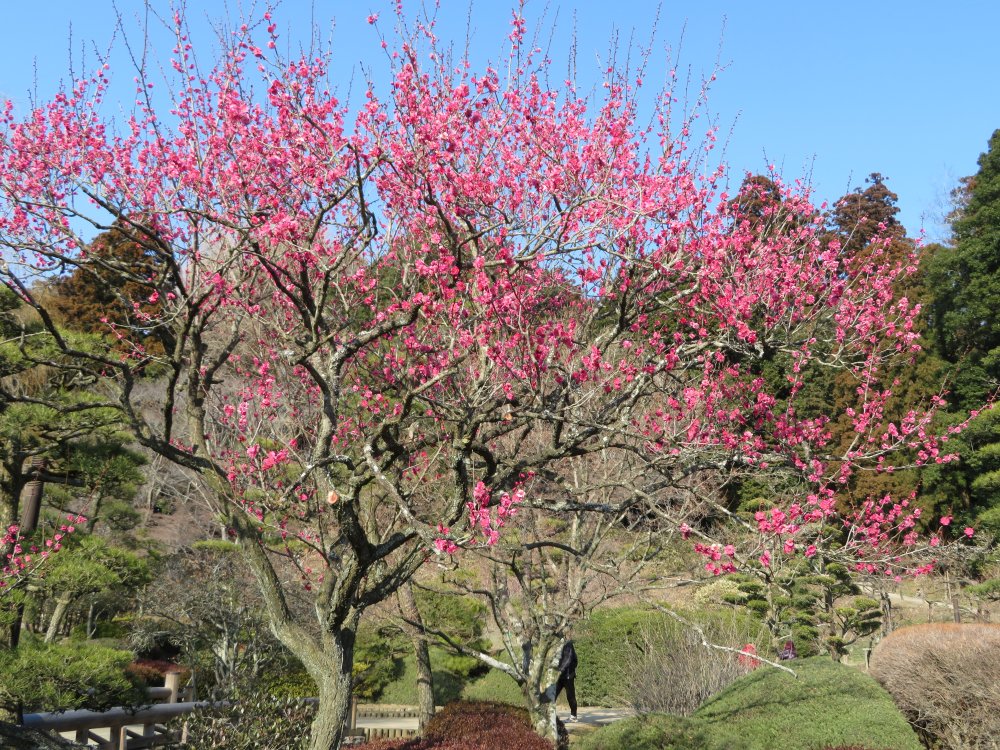
The plum flowers in Mito Kairakuen had just started to bloom.
Following our visit to Tochigi, I had wanted to visit Kairakuen in Mito City, Ibaraki Prefecture. There aren't that many places to stay in Ibaraki Prefecture as it's so close to Tokyo. Of the few resort hotels we selected a Kanpo no Yado in Ooarai by the Pacific Ocean. Kanpo no yado is a group of over fifty hotels in resort locations owned and operated by Japan Post. They are generally viewed as reasonably priced for their facilities and service.
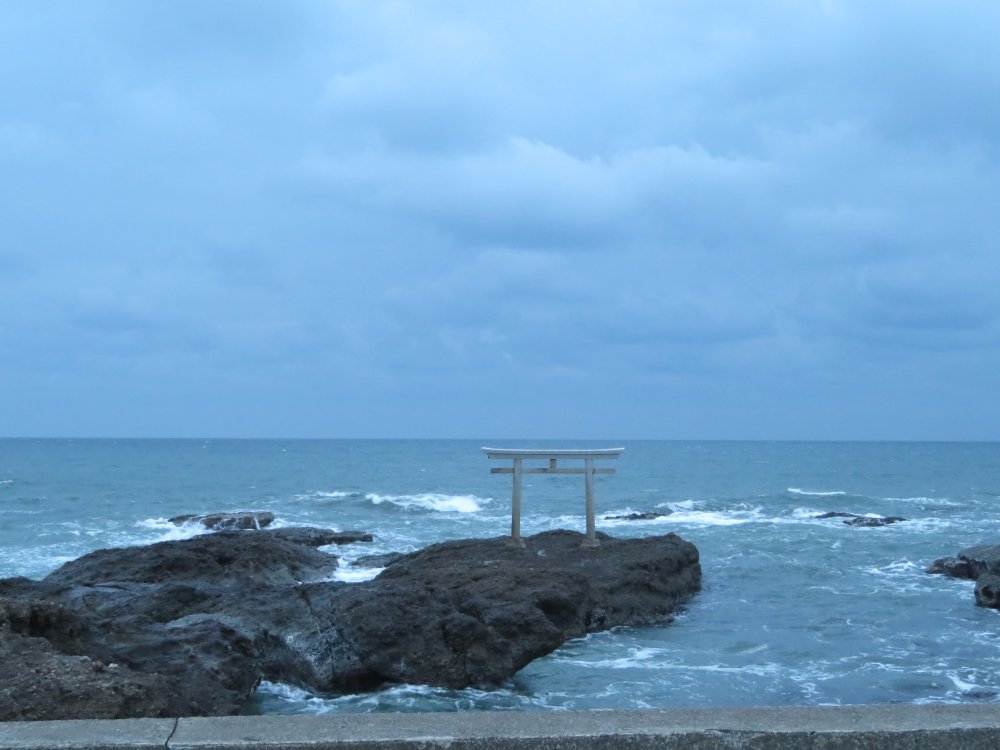
I woke up early to visit Kamiiso no torii, literally the torii gate by the shore of the Gods.
I woke up early to visit Kamiiso no torii, literally the torii gate by the shore of the Gods. This has become a particularly famous picture spot in Ooarai to view the torii gate at sunrise. This is part of Ooarai Isomae Shrine, which worships the deities Oonamuchi and Sukunahikono. The shrine according to its homepage informs us that it was founded in the latter half of the 9th century, so it is quite a historical one. Oonamuchi is also known as Ookuninushinomikoto, the founding God of Japan worshipped at Izumo Taisha in Shimane Prefecture. Sukunahikono is a partner of Oonamuchi. Oonamuchi and Sukunahikono are better known as Daikoku and Ebisu respectively, the former deity as a deity bringing relationships and the latter wealth and prosperity. The famous Kanda Myoujin in the heart of Tokyo also worships the same two deities.
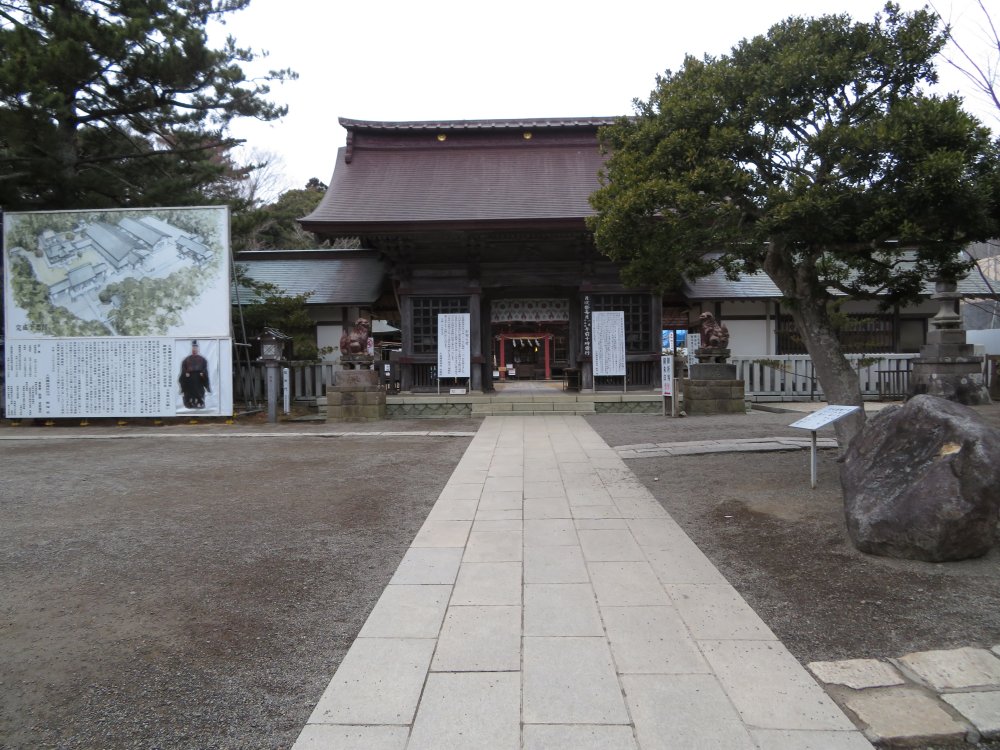
The main shrine building of Ooarai Isosaki Shrine.
I left our hotel before sunrise to Ooarai Isosaki Shrine which is on a hill top by the Pacific Ocean. There were only a few cars parked so early in the morning. From the shrine grounds you need to go down about a hundred steps down towards the sea to come to the bottom road, cross the road to reach the rocky shores. The torii gate is about a hundred meters further out into the ocean. Unfortunately I could not see the sunrise with all the thick clouds. Still it is quite a striking view.
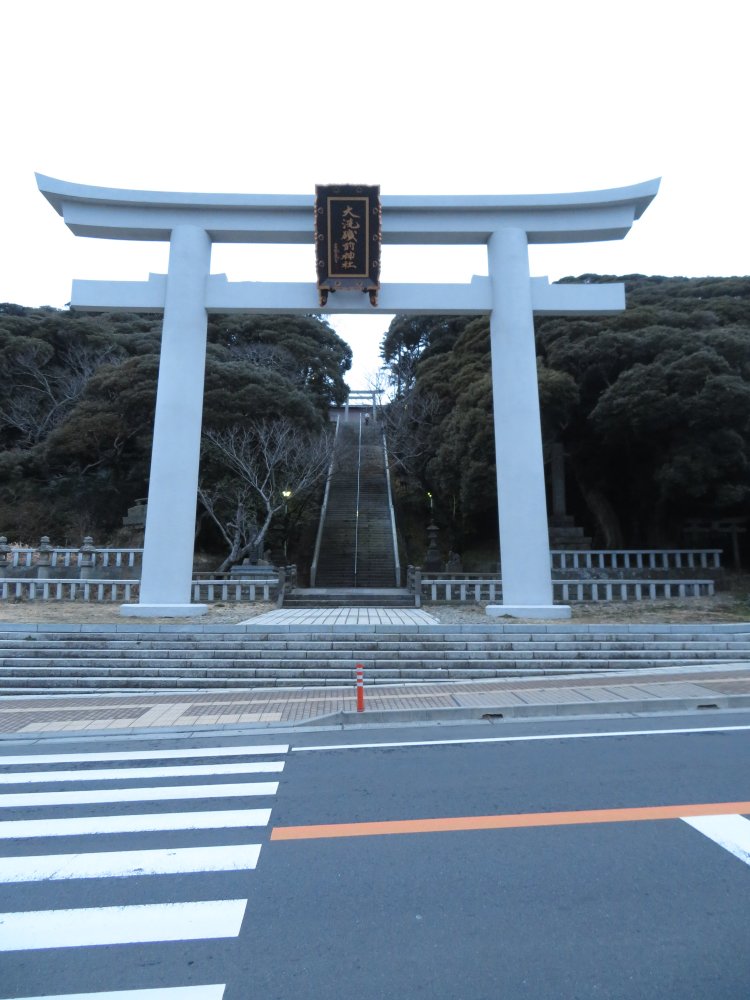
Approaching Isosaki Shrine on the hilltop coming back from the torii gate of Kamiiso.
I next went to see Iwafune no Sekishou known as one of the most famous picturesque spots of Mito. The Ibaraki Prefecture area was traditionally known as Hitachi and as an Edo era feudal domain, Mito-han. The castle was in Mito City and the feudal lords were Tokugawa, one of the three prominent Tokugawas other than the shougun, alongside Owari (Nagoya) and Kishuu (Wakayama). Nariaki Tokugawa, the ninth lord of Mito Tokugawa and father of the last shougun Yoshinobu Tokugawa designated the eight spots. This is at the river mouth of Nakagawa (River Naka) and must have been a spectacular spot especially at sunset. Unfortunately the view has been diluted by modern buildings to some extent.
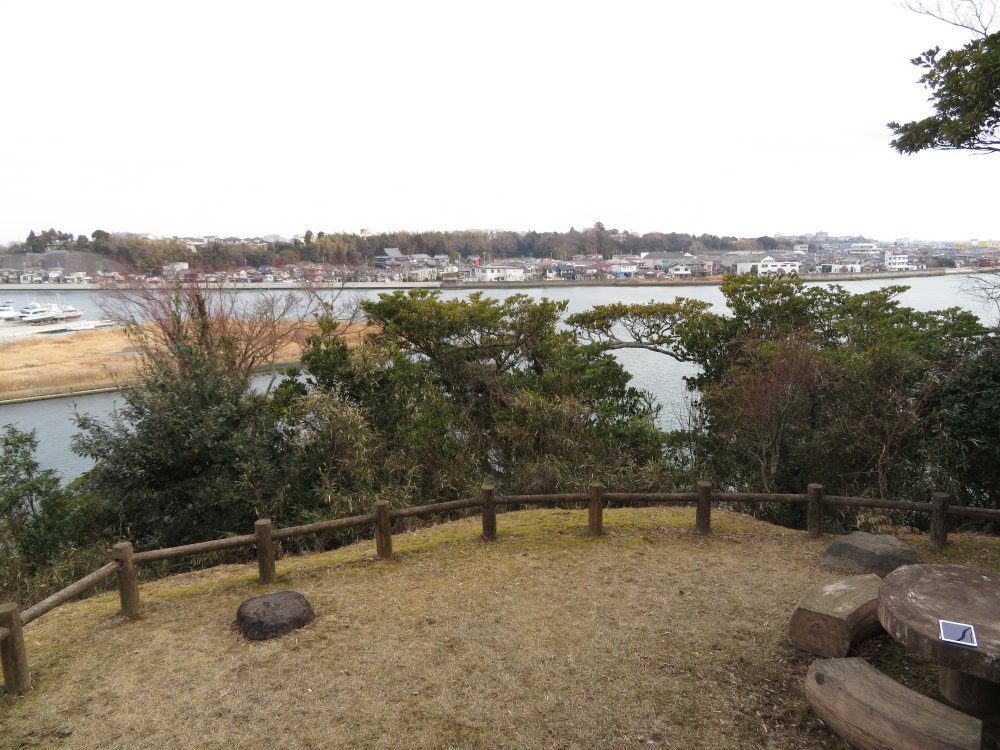
Unfortunately the view has been diluted by modern buildings to some extent.
Close by is a Buddhist Temple Gannyuuji of the Nichiren sect, founded by
the grandson of Nichiren, the founder of the Nichiren sect. Nichiren sect
was established in the Kamakura era (13th century), same period as Zen
sects were established in Japan. Nichiren sect places prime importance
on the Locus Sutra (Myouhourengekyou) and teaches if one utters nanmyouhourengekyou
(I believe in the Lotus Sutra) he can achieve total awareness of the universe
like Buddha.This temple was originally located further north but was brought
to this site in the 17th century. There is a history museum on the site
which would not open till late so we just strolled the grounds and left.
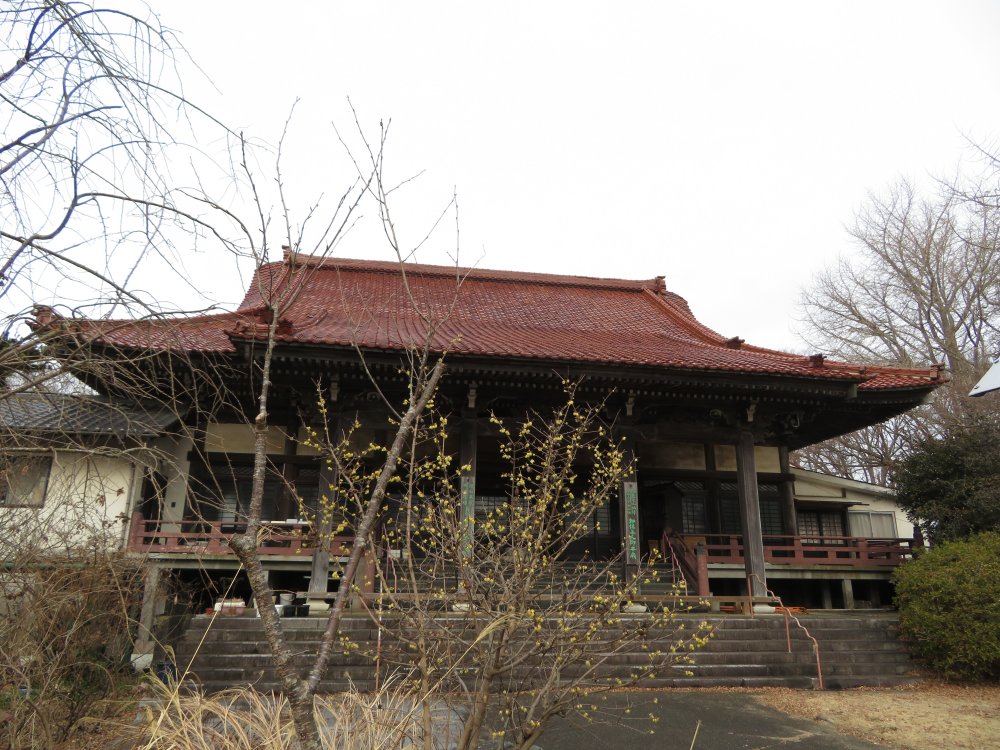
The main temple of Gannyuuji Temple. There is a history museum on the site which would not open till late so we just strolled the grounds and left.
Following this we went to visit Bakumatsu and Meiji History Museum, also in Ooarai town. The museum turned out to be much more informative than I had expected. The basis of the museum’s displays is the collection of Mitsuaki Tanaka of objects related to those that played prominent roles in the development of Japan from the Meiji and Taishou era. Mitsuaki was born as a samurai in Tosa (now Kochi Prefecture), took on various positions in the Meiji Government such as chief of the police force and finally as Minister of the Imperial Court. As such, he amassed a vast collection of art, mementos and letters from the Meiji stars including the Meiji Emperor. I was impressed to see the diary of his son, the short-lived Taishou Emperor. The admission fee is 700 yen, but for groups of twenty or more and JAF members there is a discounted fee of 500 yen. The museum is composed of the original museum built in 1932 housing the collection of Mitsuaki’s collection and a more modern extension with an auditorium running an audio visual presentation of the Meiji period. We left Ooarai Town and drove west for slightly more than ten kilometers to central Mito City. Mito was the castle town of the powerful Mito Tokugawa Family. Our main interest in Mito was Kairakuen, one of the three prettiest garden parks of Japan alongside Kourakuen in Okayama Prefecture and Kenrokuen in Kanazawa, Ishikawa Prefecture, but before that we first visited the former castle district.
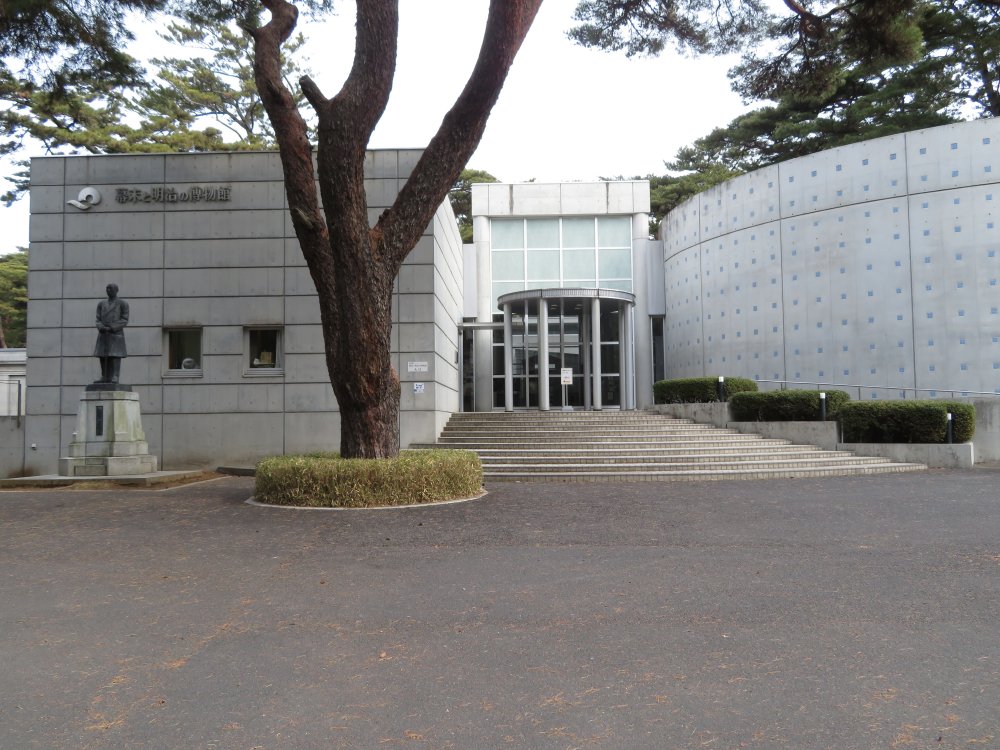
The museum turned out to be much more informative than I had expected.
The main structures of Japanese Castles are usually Honmaru (main area), Ninomaru (second area) and Sannomaru (third area) and a keep. Honmaru is where the feudal lord resided and is protected by an outer Ninomaru where the chief subordinates resided and a Sannomaru further out housing the defense army. Most castles were abandoned or dismantled after the Meiji Restoration in 1868, so only a handful of castle structures remain intact to this day, except that many keeps have been reconstructed in modern times. Mito Castle was unique in that the Mito Tokugawa feudal lord permanently resided in Edo, contrary to most lords that resided in their home castles and were obligated to reside in Edo on a periodic basis. Since the feudal lord was absent, Honmaru was used for storage and Ninomaru and Sannomaru was more a municipal office than a castle to defend. Thus Mito Castle did not have a keep. Mito Castle was abandoned in 1871 and very little remains to this day. We first visited Koudoukan which remains on Sannnomaru. Most feudal domains maintained a school for samurais to provide them with higher education and training of swordmanship especially towards the end of the Edo era. Koudoukan was a relatively large school and up to a thousand samurais were educated at the same time. Compulsory attendance days were set for samurais which was longer for the samurais from higher ranking families. A volunteer guide took us through the building. It was quite interesting to view the classrooms and the training ground. You can purchase a combined ticket with Koubuntei in Kairakuen that I introduce later, which is slightly cheaper (350 yen instead of 400 yen if bought individually).
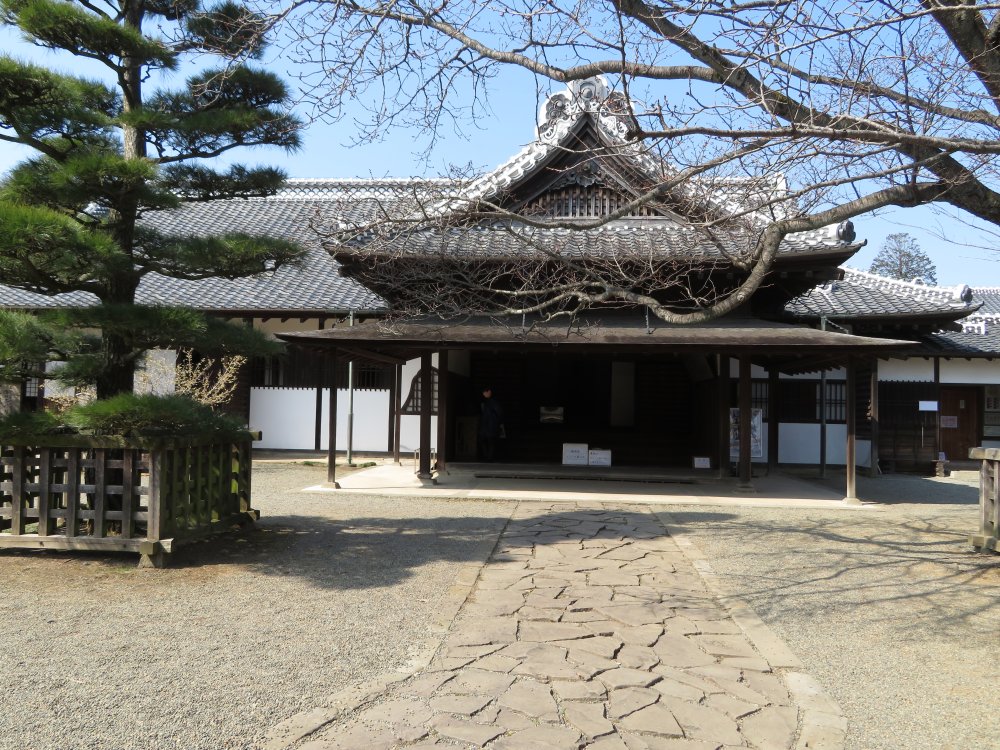
Koudoukan remains on Sannnomaru. Most feudal domains maintained a school for samurais to provide higher education and training of swordmanship especially towards the end of the Edo era.
We walked south east towards Mito Third High School. This is situated on the former Ninomaru area and there is a small museum (Ninomaru Tenjikan) displaying excavated objects and also the entire Dainipponshi (Grand History of Japan) which is a chronicle from the first emperor to the 14th century and other historical period of the same period the compilation of which started in the 17th century and was completed in the 19th century. The underlying theme is the supremacy of the imperial family which influenced many samurais that played a prominent role to overthrow the Tokugawa shogunate and restore direct rule by the Emperor.
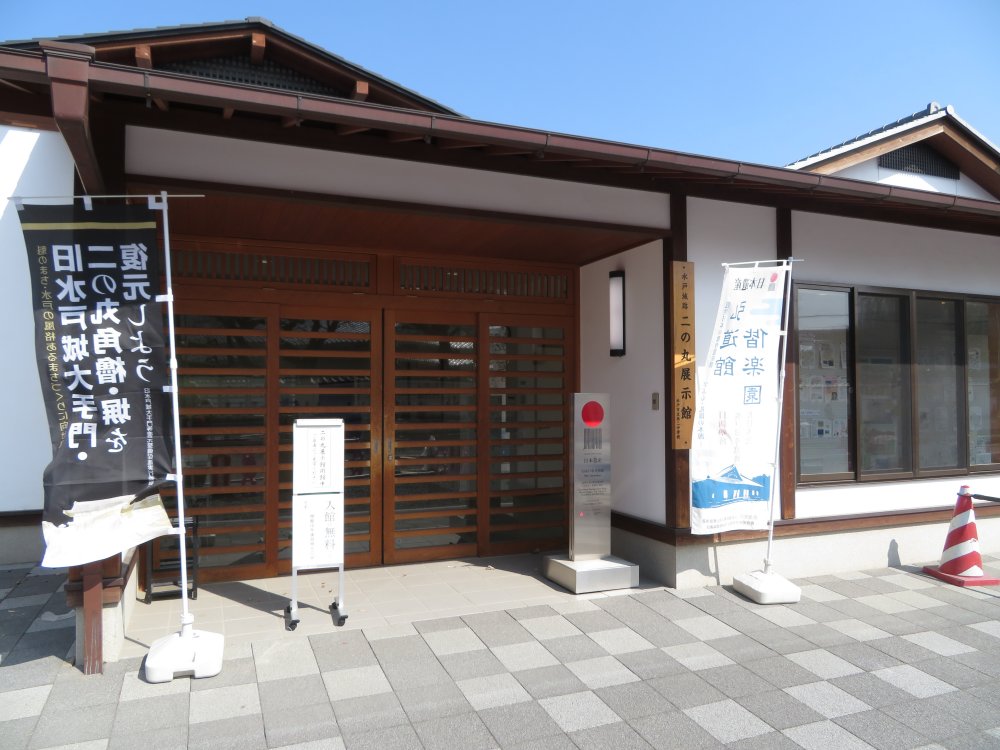
There is a small museum (Ninomaru Tenjikan) on the former castle site displaying excavated objects .
A couple of minutes’ further walk took us to Mito First High School which stands on the Honmaru site. This grand gate serving as the entrance gate to the high school is usually referred to as Yakuimon, literally physician’s gate which is the oldest surviving piece of building probably from the 16th century. The gate has nothing to do with physicians. Yakuimon was a grand architectural style often used in the feudal lords’ castles
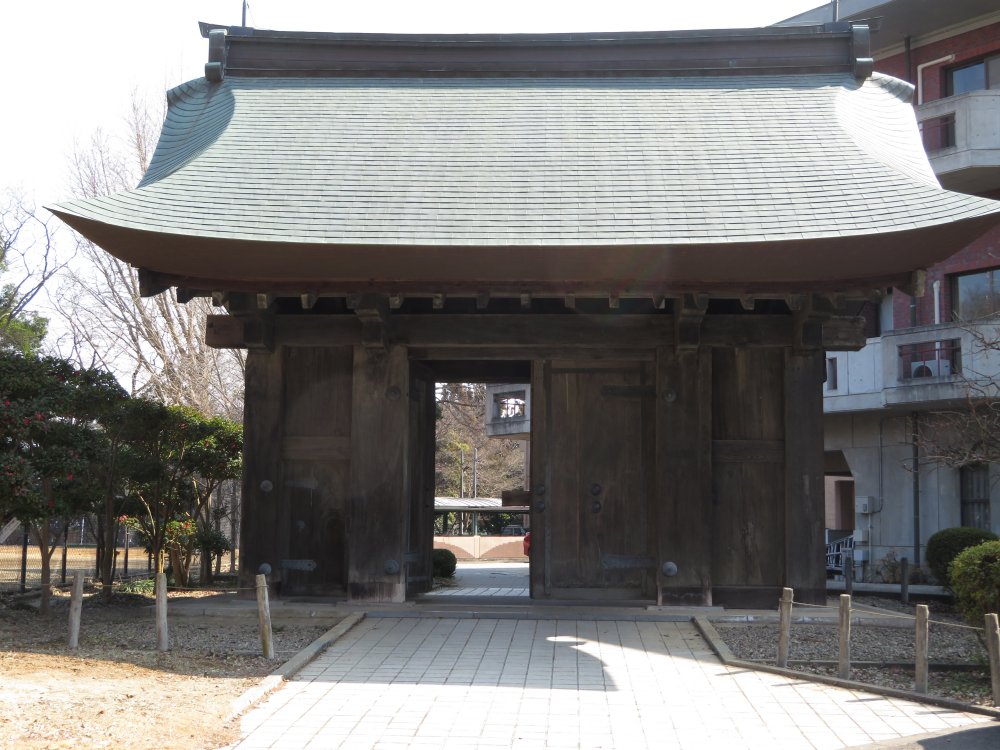
The gate has nothing to do with physicians. Yakuimon was a grand architectural style often used in the feudal lords’ castles.
We went back to Koudoukan to pick up our car and drove west for about five minutes to Kairakuen. This is a vast Japanese garden founded in 1842 by the 9th feudal Mito Tokugawa lord, Nariaki Tokugawa, who is the father of Yoshinobu Tokugawa, the 15th and last Tokugawa shougun. Kairakuen literally means to enjoy with everyone, and is particularly famous for its plum blossoms. Bloom period is from mid-February to mid-March one month earlier than cherry blossoms. We parked our car in the car park on the western side. From there you need to climb up the paths through the lower garden area to the main garden area which boasts three thousand plum trees of six species. The lower garden area more resembles a traditional Japanese garden.
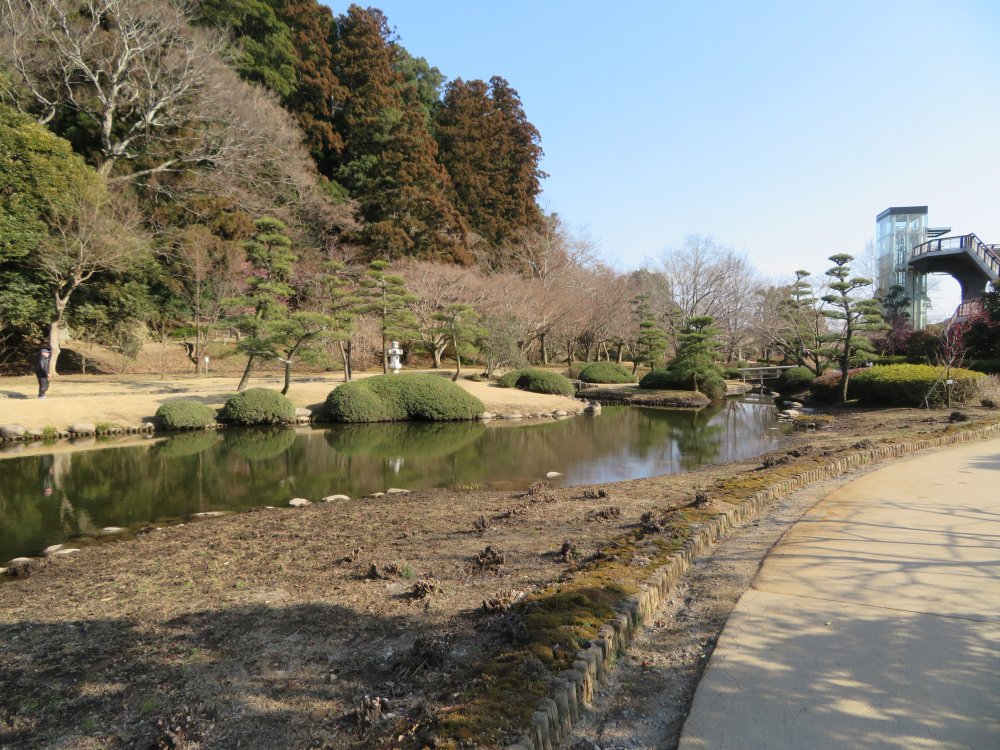
The lower garden area more resembles a traditional Japanese garden.
It had been a cold winter and the plum trees were only at twenty per cent bloom when we visited the park in late February 2018. We strolled around the plum tree area. There are no restaurants nearby, so we had lunch in the park restaurant. I must say that the menu is limited and higher priced.
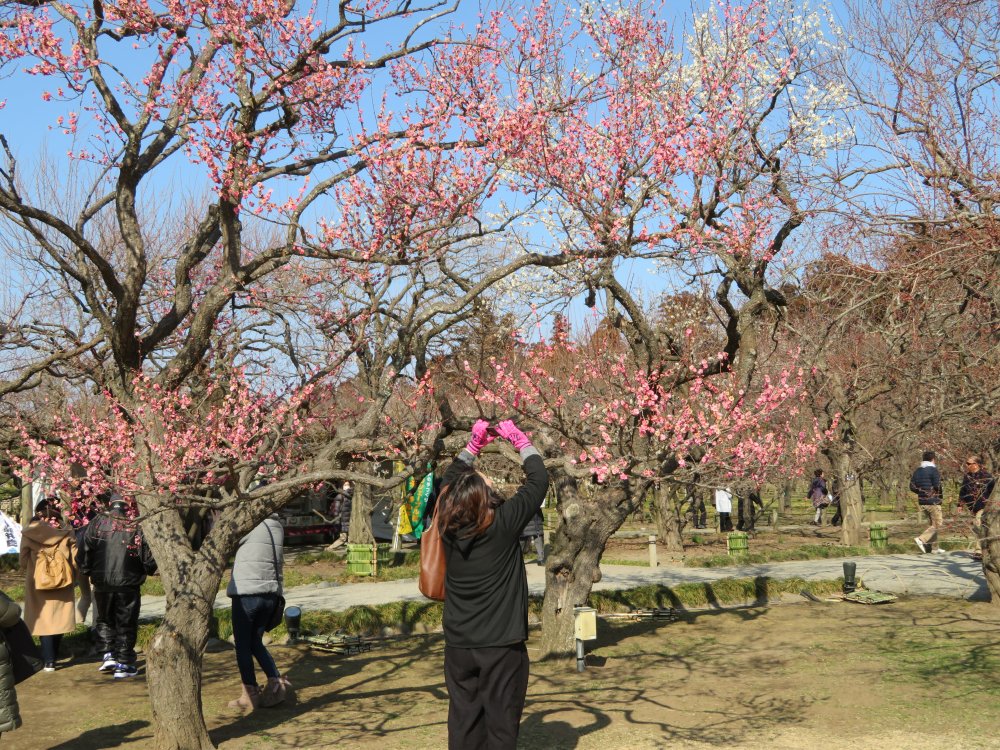
It had been a cold winter and the plum trees were only at twenty per cent bloom when we visited the park in late February 2018..
Moving further east past the Eastern gate we found a Shinto shrine called Tokiwa Jinja. This Shinto shrine worships the second Mito Tokugawa lord Mitsukuni and the ninth Nariaki. Mitsukuni is a famous lord and deputy shougun from the 16th century. He was said to travel around Japan disguised in plain clothes and would punish the bad and help the good. A sort of Japan style Robin Hood.
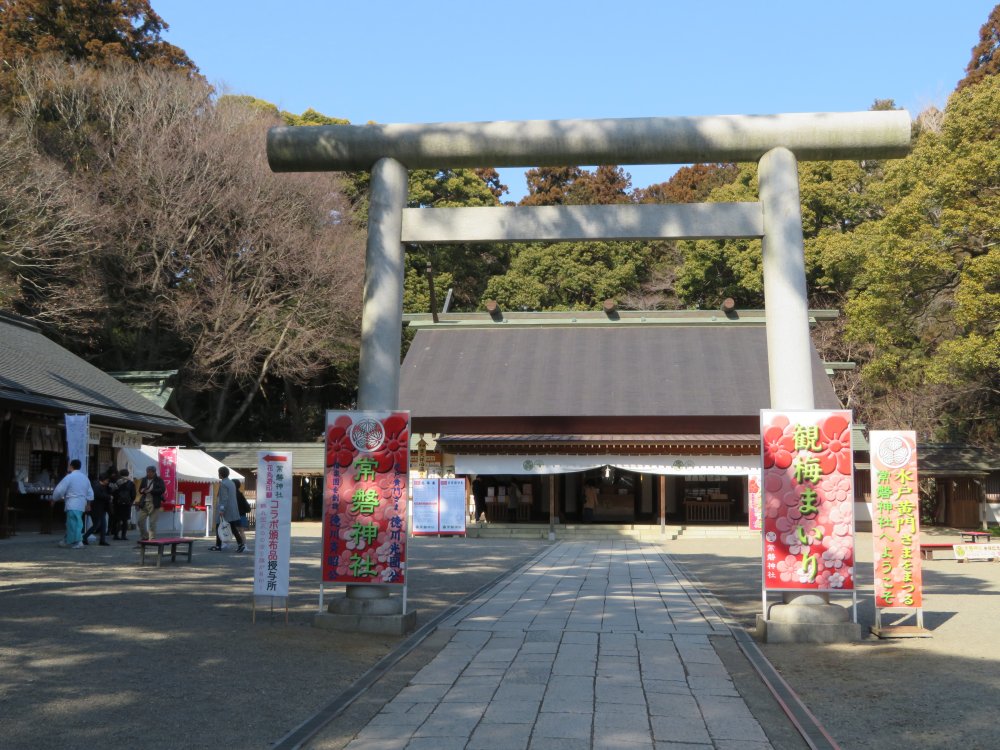
This Shinto shrine worships the second Mito Tokugawa lord Mitsukuni and the ninth Nariaki.
We went back into the garden to visit Koubuntei by the plum trees area. This is a wooden three story building designed by Nariaki for him to entertain guests. It is composed of Okugoten (the residential area for the feudal lord family and servants) and Koubuntei which was the enterntainment area. The view from the main guest room on the second floor overlooking Lake Senba to the south is particularly striking.
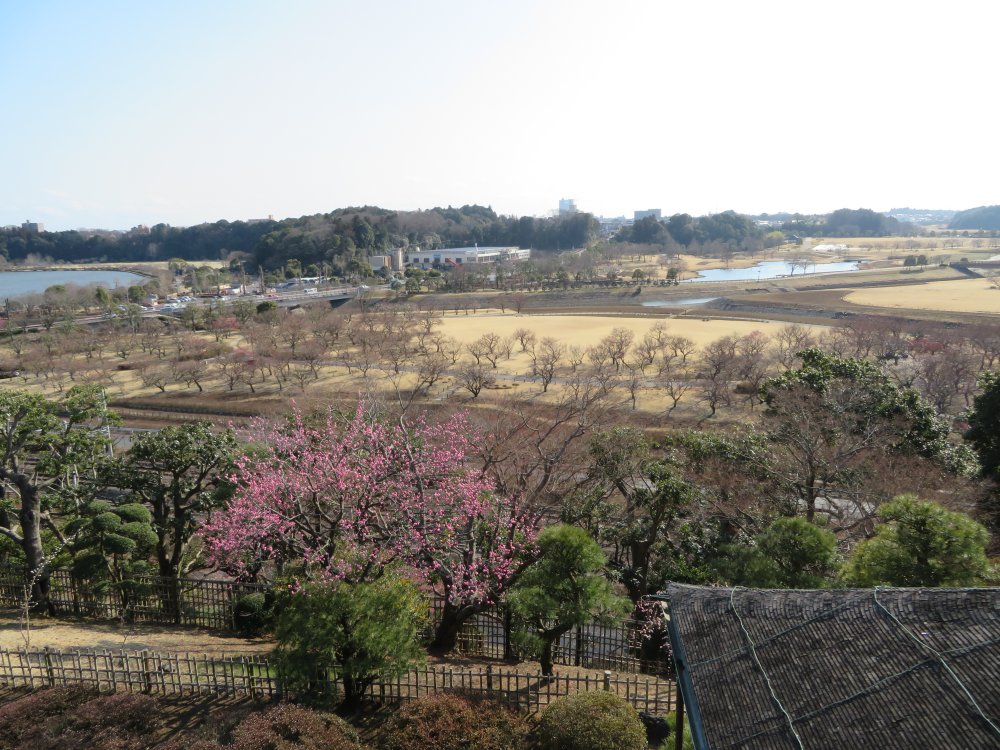
The view from the main guest room on the second floor overlooking Lake Senba to the south is particularly striking.
On our way back to Chiba, we made a detour west to Kasama City, about twenty kilometers west. Kasama is known for Kasama pottery and Kasama Inari Shinto shrine. Inari shrines worships Ukanomitama, the Goddess of harvest. Foxes are believed to be messengers of Ukanomitama, hence Inari shrines are linked to foxes. Fushimi Inari in Kyoto is well known for its one thousand bright red torii gates, but Kasama Inari is also regarded as one of the most popular Inari shrines. About eight hundred thousand people visit the shrine to deliver their New Year’s prayer every year, which is the second largest for an Inari shrine following Fushimi Inari with two million seven hundred thousand.
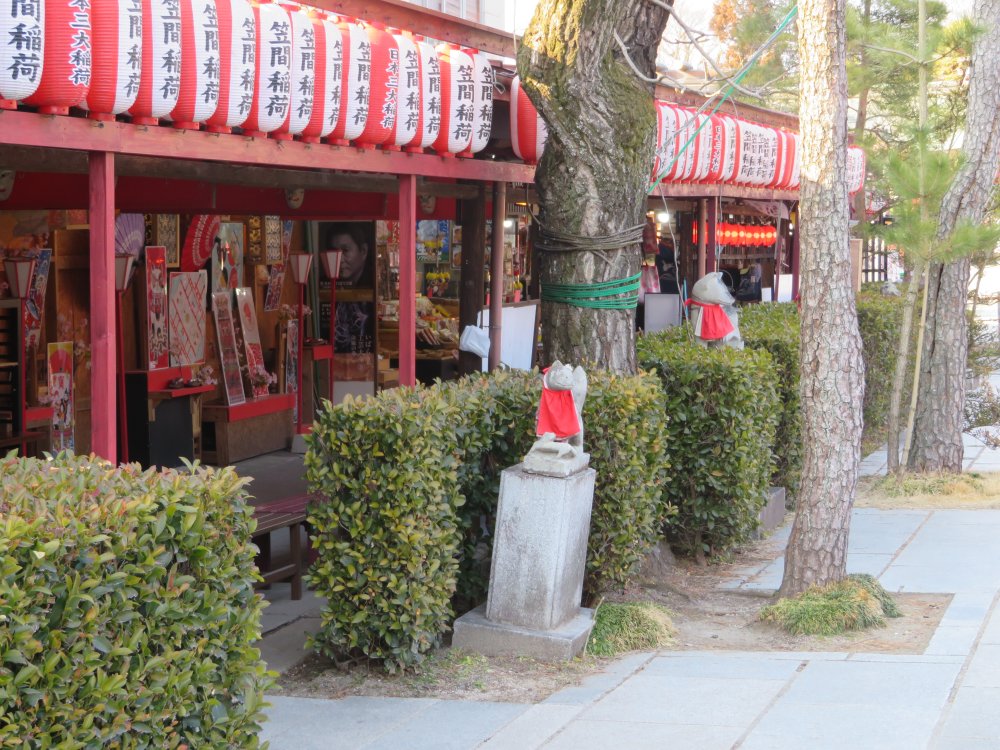
The foxes are everywhere
The high street in front of Kasama Inari is also an interesting area to visit with many gift shops. Almost immediately in front of the shrine there is a sake brewery where I bought a 1.8 liter bottle of Matsumidori tokubetsu (special) honjouzou on this occasion. This was the first time for me to try it, but it is dry and well balanced. If you love drier sake I would certainly recommend Matsumidori.
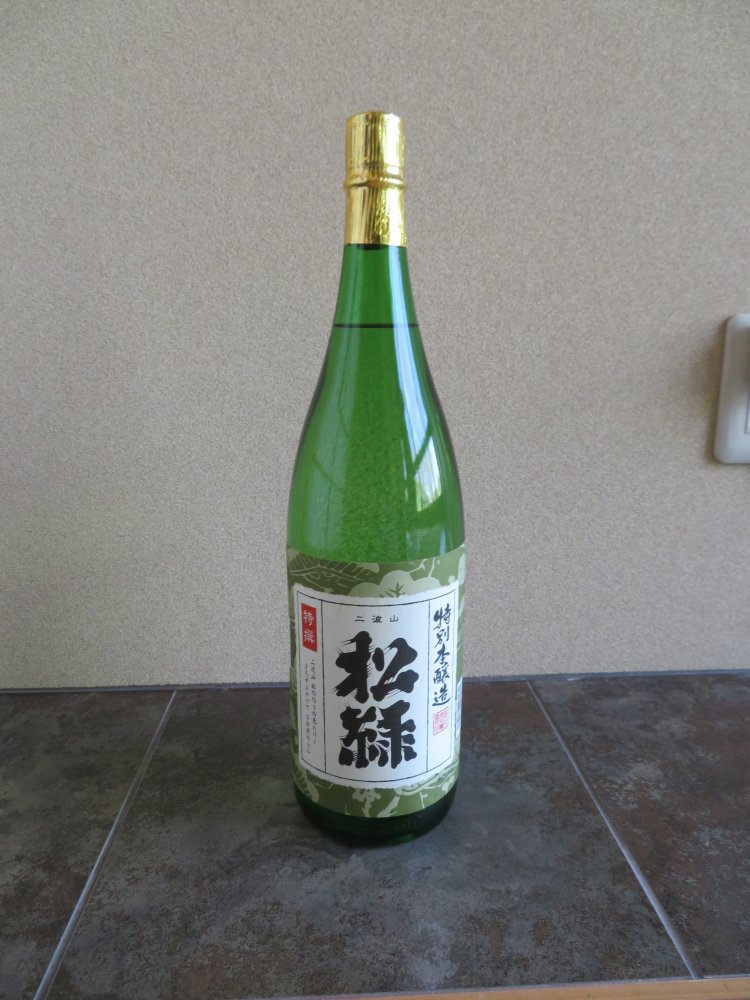
I bought a 1.8 liter bottle of Matsumidori tokubetsu honjouzou.